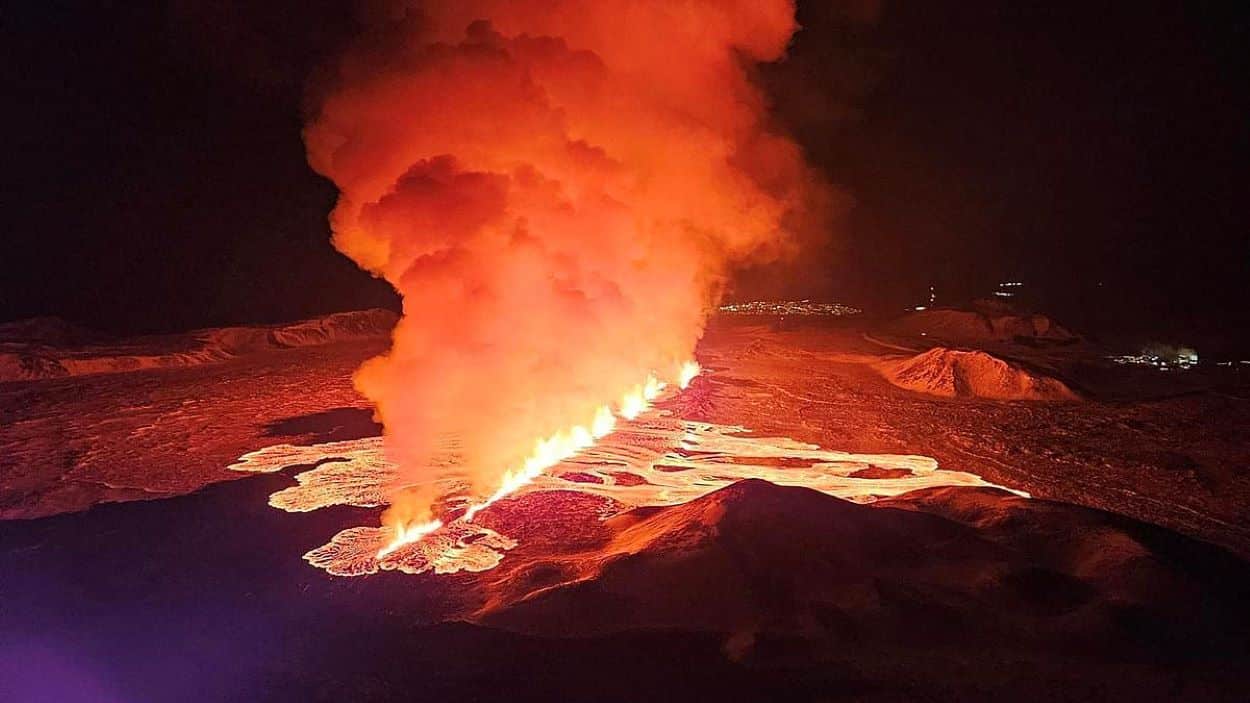According to official reports, the Reykjanes peninsula in southwestern Iceland experienced its third volcanic eruption since December on Thursday. Captured by live video feeds, the night sky was lit by the glow of lava flowing from a fissure, accompanied by a rising plume of smoke.
The Icelandic Meteorological Office (IMO) detailed that intense seismic activity heralded the eruption early in the morning, with a fissure approximately three kilometres long opening shortly thereafter. This recent event follows two previous eruptions in the area, highlighting a pattern of increased volcanic activity near Grindavik.
Impact and Response
The town of Grindavik faced significant disruptions due to these volcanic events, including evacuations and damage to infrastructure. The IMO noted that current lava flows are primarily directed westward, with the volume slightly reduced compared to the eruption that began on December 18.
Despite the destruction of property and the upheaval caused by earlier eruptions, the location of the latest eruption is considered fortunate since it occurred north of Grindavik, away from major infrastructure.
The Blue Lagoon, a renowned geothermal spa, announced closures due to the eruption, ensuring the safety of its guests through evacuations. Sitting atop the Mid-Atlantic Ridge, Iceland is one of Europe’s most active volcanic regions, and recent activities suggest a new era of eruptions may have begun on the Reykjanes peninsula.






